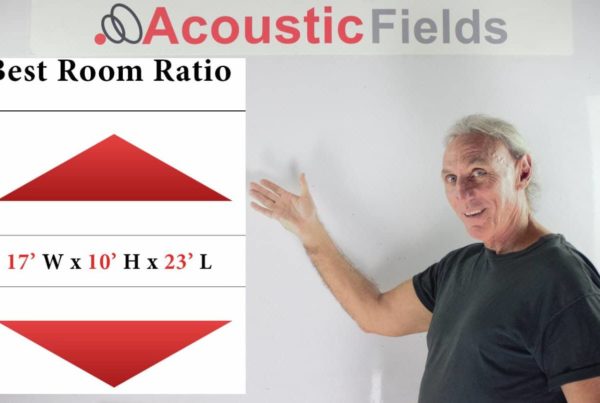Last week I was asked about ideal small room sound diffuser usage and whether our diffusers could also be used in big spaces like musical? So in answer I pose the question what is diffusion’s objective? Diffusion’s objective is to take what we’ve already created that we like and spread it out in the room. To do that you need to have gotten rid of all the bad stuff; the room modes and frequency anomalies, the comb filtering, the speaker boundary interference effect, all these issues need to have been addressed.
Good sound, remember is a summation of all little things done right. I think the list is like 80 some items long we use when we build the room. It’s a lot of little things done correctly.
So diffusion takes what we’ve done and then spreads it out and gives us more of it. It adds some air and definition into the situation. So for purposes of discussion, the diffuser does perform certain things. So that said, it doesn’t really matter if it’s a large room or a small room.
Small rooms always need diffusion by definition because they’re small, there’s not a lot of space for the energy to go and be more realistic. What gives this a sense of realism? Space and for sounds to occur in space and make it sound like it’s a bigger room, we try to get the reflections minimized. So diffusion and small rooms make it sound like a big room does naturally. Well, it’s a bit of a stretch to say that but it adds that kind of space.
I tell people, if you install diffusion correctly in your room, it’ll be like adding 5 to 8 feet in every dimension. That’s how it acoustically sounds to you. You just do the front and the rear wall and you’ll add, in your brain’s eye, your mind’s eye, another 5, 7 to 8 feet to some of the dimensions of the room.
So big room, small room, it doesn’t matter.
Do you want to take the energy that you’ve created and spread it out and make it available maybe to more people? Maybe some more definition, maybe some more air and airiness in the presentation? This depends but it’s a great tool. It really doesn’t matter on the size of the room but it can be installed in both. Whatever the objective of the usage in the room is.
It’s a tool to help you get that objective but you’ve first got to know what the objective is. The objective of home theatre versus two-channel versus a large auditorium are completely different. One size does not fit all.
A closing thought regarding a squirrel and a forest.
We were recently talking about some of the things that new customers have gone through and it’s amazing to me to hear all the things that they’ve done to resolve problems and all the things that they tell me they’re still unhappy about. Had we spoken to them at the beginning, before they took bad advice from others, we could’ve ensured they didn’t go down a certain path.
There’s a lot of things in the literature that people just blindly accept. So, I was saying to my colleague Ali that even a blind squirrel can find a nut in the forest. You can just stumble around and build things and try things and eventually you’ll get close to what you were trying to achieve, you’ll get the nut. But doing it that way is a very expensive process. Trial and error in room acoustics is not good. It’s just too expensive.
I’ve done all these things, I’ve made a lot of mistakes but I’ve learned from them then I created a database to help other people not make the same mistakes. So I can immediately tell if you’re headed down the wrong direction and be able to help you. So don’t be blind. Don’t try to take what you hear and see in the literature and go: “well that’s good for me.” Don’t do that.
Instead decide what you want and then use the technologies that are available to help you get the sound that you want. It’s not about taking a technology that you think is cool and putting it in. Sure, the manufacturer is pleased with that but the manufacturer’s more pleased if you take that technology that he created, you put it in your room and you get the sound he created it for, that’s the most important part. So, you know, don’t read things in the literature think they’re cool and think that they’re going to work for you because they may or may not.
In Summary
If you would like to learn more about room acoustics please sign up for my free videos and ebook by joining the mailing list here. I send room tuning tips and things for you to test in your room every Wednesday. They are easy to follow and will really help you enjoy more of your music.
Alternatively feel free to contact me directly at: 520 – 392 – 9486 MST or info@acousticfields.com. You can see more of my research and development story and why I started Acoustic Fields at: https://www.acousticfields.com/who-we-are/.
Thanks and speak soon
Dennis







